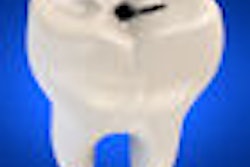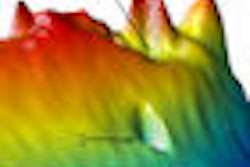High-frequency, high-resolution ultrasound shows "great potential" as a noninvasive, nonionizing imaging technique for the early diagnosis of severe periodontal disease, according to researchers from West Virginia University (Annals of Biomedical Engineering, June 8, 2010).
"Although medical specialties have recognized the importance of using ultrasonic imaging, dentistry is only beginning to discover its benefit," they wrote. "This has particularly been important in the field of periodontics, which studies infections in the gum and bone tissues that surround the teeth."
Their in vitro study investigated the ability of using a noninvasive, high-frequency ultrasound imaging system to reconstruct 3D bone surface images for the human jawbone using high-resolution B-mode images. This is the first technique to provide a simple and efficient 3D tool for the diagnosis of bony defects in the mandible, particularly those arising from moderate-to-severe periodontal diseases, they wrote.
The system employs single-element focused ultrasound transducers with center frequencies ranging from 30 to 60 MHz. Continuous acquisition using a 1-GHz data acquisition card is synchronized with a 2D positioning system of ±1 μm. Signal and image processing algorithms were applied to reconstruct high-resolution ultrasound images and extract the jawbone surface in each frame. All edges were then combined and smoothed to render a 3D surface image of the jawbone.
Major anatomical landmarks on the images were confirmed with the anatomical structures on the mandibles. All the anatomical landmarks were detected and fully described as 3D images using this novel ultrasound imaging technique, whereas the 2D x-ray images suffered from poor contrast.
"The system is able to reconstruct 3D images for the jawbone outer surface with high spatial resolution down to 24 μm," the researchers wrote. "The system is also able to accomplish the total 3D scanning within less than 30 seconds."
The results suggest that the high-frequency ultrasound system shows a great potential in providing a noninvasive methodology for detecting periodontal diseases at early stages, they concluded.
Ongoing research is currently focused on future in vivo clinical human studies.
Copyright © 2010 DrBicuspid.com



















